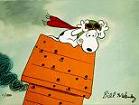rader
Posts: 1238
Joined: 9/13/2004
Status: offline

|
Since the other thread went off the rails a bit, I thought I'd start a new one. And I would prefer if you would refrain from hijacking the thread with personal attacks. I will create another thread in parallel specifically for personal attacks. I used the title "ground bombing is borked" to draw attention, although I would be the first to admit it's hyperbole. I thought that was pretty clear 
I thought I should start by clarify my statements. First, I don't think this is a purely JFB gripe. I've used this borked ground bombing model to my advantage too. And I also have a serious gripe about 4E bombers; but fantasy 4E bombers flying sorties every day and always finding the target is balanced in the game by practically unlimited Japanese aircraft production, so overall, I think it works out even if a bit silly both ways. Plus there are other balance issues on both sides, but I think Jzanes and I should respond to these jointly once we've concluded our game (now in June 1945).
My statements with regards to ground bombing apply almost exclusively in clear terrain. In fact, I think terrain is way too much of a factor in general in a game of this scale and ground bombing is probably borked in the opposite direction in very rough terrain. It is nearly impossible to defend in the open, and very tough to attack in 3x/4x terrain. (I would prefer a normalization so that open = x1.33, woods/Light urban = x1.66, mountains = x2, and heavy urban = x2.5 or something like that for both air effects and ground combat.) I would definitely support the idea that these numbers or something like them should apply to ground combat also. 2x/3x/4x are just ridiculous force multipliers for a strategic level game.
What I mean by "diminishing return" in the case of ground bombing is that the fewer men there are in a hex, the less damage that should be done. I.e., damage is too high even when there are a lot of men in a hex, BUT it is especially too high when there are very few men in a hex. The more men you put in a hex, the more damage should be inflicted on them (because they are easier to hit, being easy to find and stretched out in columns on roads, etc.). However, even then, destroying whole divisions or even regiments from the air in a matter of days is pure fantasy (yes I take advantage of it too, so I am not merely whinning, but pointing out a problem).
I'll give you a concrete example. If an island of 40 square miles has 300 men, would you imagine that they'd be sitting in a circle marked with a big red bullseye? I would expect such a small force to be pretty much impervious to air attack. How would you even find them? Obviously, historically, the allies considered that they actually had to land to take an island, and couldn't just destroy a small garison from the air. But if you start to pack 10,000+ men on a small island, you might start to actually hit a few that happen to be sunning themselves on the beach. The way it currently is, in the long run, you cannot possibly defend a clear terrain base from paratroopers without a major committment of AA units and fighter cover. The garrison will just be all killed from the air, and then paratroopers will land and occupy the vacant base. Probably under a few thousand men or so, damage inflicted by aircraft in ground bombing should peter out to almost nothing because a few soldiers sitting in foxholes really dosen't make a credible target in a 40 NM hex regardless of the terrain. I.e., there should be diminishing return as your target is smaller (fewer troops to bomb). This is in addition to the fact that ground bombing damage really needs to be normalized so that it does a bit more in rough terrain and much less in clear terrain. The best concept for how to defend a clear rear base hex that I can come up with is don't defend it. Just bomb any paratroopers that take the base, and then take it back with paratroopers. This creates a silly "no mans land" of a base that switches hands back and fourth each turn.
Another area that could use some serious diminishing return is airfield/port damage. Right now, we have linear damage accumulation (e.g., it is just as easy to go from 20 damage to 40 damage as from 40 damage to 60 damage or 60 damage to 80 damage or 80 damage to 100 damage). But after the first few bombs fall, the juicy targets have already been hit. The first bomb on the runway makes a big difference and is most likely to hit a plance. Drop more and more bombs, and you are getting diminishing return for your efforts. You are starting to hit the same areas/planes/facilities over again, and are hitting the most likely candidates on the first pass. After that, the more camouflaged/inacessible/less scouted targets are not being hit as often as the first targets (partly because it is very difficult to assess the actual damage done and figure out what areas still needs special "attention"). Also, as planes become damage or destroyed, it becomes really tough to tell where the active ones are. We saw this at the Henderson Field "boneyard" where they left destroyed airframes parked around as decoys for the Japanese bombers to bomb over and over again. From 10K ft+, you can't tell an active airframe from a damaged one.
A related example is ordinance. Bomb effectiveness increases with the square root of its mass, not linearly. And more bombs = more damage, but 10x the bombs on a (land) target dropped together does not equal 10 times the damage because of the pattern in which they fall. And I suspect this would be especially true if the single bomb was delivered significantly more accurately, say, by a specialized groud attack plane or dive bomber... in fact, I'd be willing to wager that a stuka employed in a ground attack role (without air opposition) would do on average more damage than a B-17 per sortie. Anyone have any figures or ideas? But in any event, certainly much, much more damage *per bomb*. Yet again we find diminishing return.
Actually, nemo's concept for bomb sticks (see his nemesis AAR) goes a long way towards solving this - and modelling the different kinds of gun turrets he proposed goes a long way towards better reflecting 4E bombers.
Also, think about what bombing an airfield hex represents... we are talking about multiple airfields (and sometimes ports) in a 40 NM hex. How can a single bomber group (purportedly in formation, and acruing defensive benefits as such) manage to hit multiple airfields at the same time? It is way too easy to drive a single "airfield" from 0 to 100 damage in a single attack. Rather, it should be easy to do the first few points of damage (a few holes in a runway resulting in high ops losses and reduced a/c handling ability), but almost impossible to completely shut down a high-level airfield. I.e., there should be diminishing return on bombing a damaged airfield/port. This is especially bad because of the way repairs work: engineers repair ALL runway damage before repairing a single point of service damage. This means that any aircraft trapped at an airfield with 100 serice damage aren't going anywhere, ever, if the other side manages to keep at least 1 point of runway damage there. Why don't engineers repair all damage (service/runway/port) at the same rate? This would make so much more sense and be much more useful.
Another example is the AA one. Just try stacking 30+ AA units is a single hex and see what happens. Impossible to bomb without major losses. But a single AA unit dosen't do squat. But remember that these AA units are guarding the most vulnerable targets first. So adding more an more dosen't necessarily do that much more, because you just bomb another part of a hex. For play balance as well as realism, AA effectiveness should definitely be subject to diminishing return based on how many are in the hex.
Recon, as stated in the other thread, is another good example. A single plane won't do much, but it will do much more than the 50 planes following it. Nevertheless, 50 planes will still tell you a lot more... i.e., diminishing return (but still substantial gains) with each recon.
Yet a further example is city bombing. It is very tough to tell what facilities have already been hit; you are going to end up rebombing the same places and aren't going to be able to identify what was knocked out and what wasn't. And it is further hard to hit just a few points of inducty in a large industrial center. For example, my opponent has completely wiped out my industry (heavy and light) outside Japan with B-29s. But would it really be possible to identify all the suitable targets in cities like Saigon, Shanghai, Hong Kong, or Bangkok? Absolutely not. So city bombing should be subject to diminishing return based on both i) the amount of industry in a hex (more indsutry = more damage), and ii) the proportion of that industry that has already been knocked out (more industry already hit = less damage).
Sorry if all this sounds like a rant - it's not meant to be and is written in the best of moods (I'm not at all angry or anything, and my motivations are only to help improve the game)  WITP is probably the best game ever made (especially AE), but IMHO it suffers from big balancing problems in some of these areas, and could benefit from a little negative feedback (in the mathematical sense, not criticism) in the form of diminishing returns. WITP is probably the best game ever made (especially AE), but IMHO it suffers from big balancing problems in some of these areas, and could benefit from a little negative feedback (in the mathematical sense, not criticism) in the form of diminishing returns.
< Message edited by rader -- 10/28/2011 1:25:09 PM >
|
 Printable Version
Printable Version


 WITP is probably the best game ever made (especially AE), but IMHO it suffers from big balancing problems in some of these areas, and could benefit from a little negative feedback (in the mathematical sense, not criticism) in the form of diminishing returns.
WITP is probably the best game ever made (especially AE), but IMHO it suffers from big balancing problems in some of these areas, and could benefit from a little negative feedback (in the mathematical sense, not criticism) in the form of diminishing returns. 



















 New Messages
New Messages No New Messages
No New Messages Hot Topic w/ New Messages
Hot Topic w/ New Messages Hot Topic w/o New Messages
Hot Topic w/o New Messages Locked w/ New Messages
Locked w/ New Messages Locked w/o New Messages
Locked w/o New Messages Post New Thread
Post New Thread